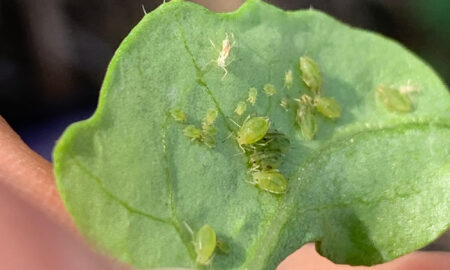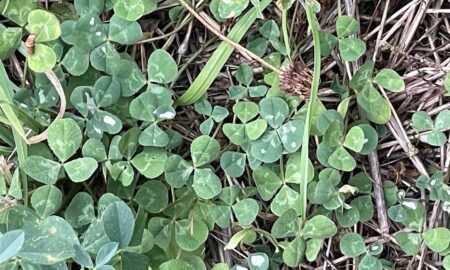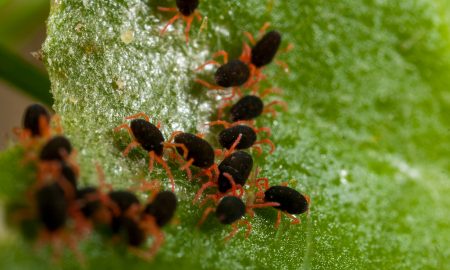Lucerne leafroller creates itself a little fort by rolling and webbing leaves together.
A bit about the lucerne leafroller
The lucerne leafroller (Merophyas divulsana) is a cunning little caterpillar.
Growing to only 15 mm long, the lucerne leafroller webs leaves together, feeding on the terminal leaves and flowering stems in its self-made shelter, where it will eventually pupate.
As alluded to by its common name, lucerne its primary host, but it has also been recorded in a wide range of host plants, including soybeans and clover.
Damage is often only cosmetic – as tiny caterpillars, there is only so much foliage they can eat!
However, occasionally the damage can be noteworthy, whereby heavily infested plants become stunted, and yield and quality of hay is seriously affected.
Sometimes lucerne leaf rollers can also reduce pod set of seed crops.
Given that damage is often most severe in moisture stressed paddocks, the risk of yield losses could be greater in crops experiencing drier than usual conditions this year.
Lucerne leafroller reports
We have records of three instances in the past five years where lucerne leafroller outbreaks in Victoria (Elmore and Cobram) have caused significant yield loss to a paddock.
In these instances, webbing of leaves, and chewing damage was described. One reporter described most plants having growth point damage, withering at the top of the plant, and caterpillars dangling from the leaf tips.
These reports occurred between March and August.
Lucerne leafroller management
It is generally not necessary to spray for lucerne leafroller unless seed production is threatened.
Early cutting or grazing is a way of reducing the economic damage caused by this pest.
With spring, comes an abundance of natural enemies that help suppress pest populations, including the lucerne leafroller, whose caterpillars are susceptible to attack by small parasitic wasps.
Acknowledgements
Field observations
Jonathan Grant – IK Caldwell (Northern Country, VIC)
Cover image: Photo by D Ironside, QDAFF





